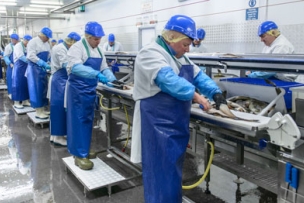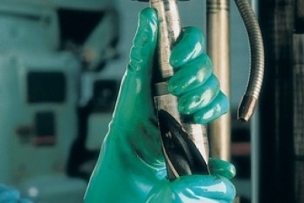Arc flash exposure can kill given the extreme heat and blast force. Learn how to best use PPE to reduce the risk of harm for your workers.
The thing that will likely stand out about arc flash safety is that the Occupational Safety and Health Administration’s focus is not about prevention.
“We’re the only trade where OSHA is concerned about minimum injury and not preventing injury,” explains Bill Nolte, a master electrician who manages electrical safety services and training for Martin Technical.
Under OSHA’s requirements, “a second-degree burn is an acceptable injury,” Nolte says. But one in 20 workers exposed to an arc flash may suffer a worse or catastrophic burn, he adds.
“I don’t know a single electrician who has never been shocked,” Nolte says.
Once a safety team understands that, it can take steps to do a few things to help keep its workers safe and put the odds in its favor that an employee doesn’t become the one in that statistic.
What Is an Arc Flash Hazard?
At its most basic, an arc flash—which has the potential to achieve heat levels of roughly four times the surface of the sun (or 35,000 degrees Fahrenheit)—occurs when an unexpected electric discharge travels through the air between conductors or from a conductor to a ground.
The potential harm comes from the extreme heat. It can vaporize metal and lead to a massively forceful blast of plasma and molten metal.
But the distance—or impedance—from the energy source and the voltage of the device emitting the discharge play into the potential harm. The greater the current, the more damage possible; but, the greater the impedance, the less potential damage likely.
Clearly, on a metalworking shop floor, there’s potential for an arc flash incident to be exacerbated by induction furnaces, sharp objects and the thermal energy created as workers cut and form molten metal.
“There are so many energy sources in machinery that you can’t limit your thinking only to electrical,” Nolte says. “Missing one can get you hurt or possibly killed.”
Learn about the value of optimizing your lockout/tagout procedure for electrical design in “5 Arc Flash Protection Tips for a Better Fire Safety Plan.”
Arc Flash Calculations for PPE Selection: Incident Energy Method vs. Table Method
“Arc flash PPE selection is based solely on incident energy, as determined by arc flash risk assessment calculations or tables in NFPA 70E, Article 130,” Nolte says.
But electrical safety is complex, Nolte says. That’s why all arc flash PPE products carry labels based on the ability to protect at a specified level of exposure and all arc flash labels provide detailed information about its voltage and current levels.
Even so, it’s an area of expertise that many metalworking and manufacturing businesses need help with to do successfully, he says.
Although there are limitations to the table method, it was never intended that field personnel perform all of the steps to use the tables in NFPA 70E Article 130, Nolte says. And, performing arc flash risk assessments by the calculation method yields potentially less, or lower levels of PPE, though they are based on a plant’s specific risks, he says.
“I’m a firm believer in doing the arc flash study, but not a firm believer in following the recommendations on the labels dictated, because they’re going to protect to a minimum level and a second-degree burn,” he says.
Go deeper. Read “Standards Spotlight: The Most Crucial Changes in NFPA 70E 2018.”





